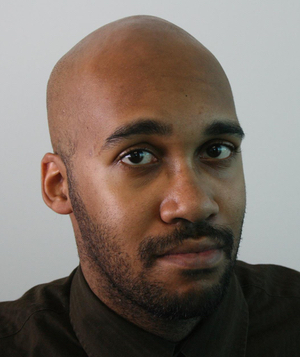After a year, Belle Isle still welcomes people of color, but...
It has been a little more than a year since the city of Detroit leased Belle Isle to the state of Michigan, a deal that officially made the city park into a state park. For many Detroiters, it was yet another blow, though symbolic, to old Detroit, when everything in the city’s bounds was city-maintained. For nearly everyone else, it was a necessary step forward in the city’s ongoing recovery.
Last year, I was hesitant to accept the changes at Belle Isle, because with the state lease came an influx of law enforcement. I wasn’t against law enforcement, nor the state takeover in full, but I was concerned about intimidation, and the fear already instilled in many Detroiters, myself included. Not fear of getting caught, let’s be clear. But just the fear of police itself.
There was concern at the time that Belle Isle would essentially be whitewashed, that the park would become a haven for New Detroit – young, white newcomers and the suburbanites who love them (but their tax dollars more) – at the expense of old Detroit. A year later, did all the black people disappear from Belle Isle?
Nope.
I’ve been to Belle Isle twice so far this summer, once for an evening picnic with a friend and once for an outdoor brunch with a group of friends I trade recipes with. I figured both times were appropriate to count the black people there – not including myself.
The island was sparsely populated during the evening outing. Yes, it’s beautiful to watch the sun set over the river, and it’s also quiet. I’d recommend this if you’re looking for a cheap way to appreciate the city. But during the Sunday brunch? Belle Isle was just like it had always been.
Just like always, you’re met with countless family-reunion signs, guiding loved ones to a coveted spot. And the vast majority of those reunions were black families. There were folks like me everywhere that day. There were black parents with their children at the Aquarium, black people fishing in the streams, black people riding bikes. There was a black guy in the Gatsby-themed wedding – filmed with a drone, because in 2015 that’s what we do now -- in the Conservatory. More importantly, there were more black people than you could count, which seems to be different from – ahem – other observations on life in this changing city.
And it wasn’t just my people. We sat near a Latino family trading Spanish and English in conversation while listening to Adele, watched mothers in hijabs wrangle with their high-energy children, interracial couples taking in the sights. If you want to know what America In 2015 looks like, maybe Belle Isle is the place.
The police presence varied on both days. Light on the day of the Sunday brunch, but heavy on the day barely anyone was there. Either way, it’s enough to strike that fear.
I remember describing last year various incidents with the police that people close to me had experienced, and getting reactions ranging from “not all police” to outright dismissals of any possible wrongdoing at the hands of law enforcement. A year later, it is impossible to not have any concern that maybe, just maybe, there’s a problem in how officers conduct themselves.
You don’t have to look to the case of Sandra Blank, the woman found dead in a jail cell after being cited for a traffic violation. You don’t have to look at the case of Freddie Gray, the Baltimore youth whose spine was severed in police custody. No, just look down the road, in Inkster, to the case of Floyd Dent, the motorist savagely beaten by an Inkster police officer who later planted drugs on him. That case is indisputable, rightfully costing the officer his job and putting the Inkster in a financial bind.
It’s because of Dent, Gray, Blank and many others – but especially Dent – that I still tremble when I see a cop in my rearview mirror. It doesn’t matter if it’s Detroit Police, DNR, MSP, or any other agency. It’s an unshakable feeling that even if my license is good, my plates are good, my insurance is valid, I have the little “P” on my tags that shows I paid for the annual park pass and I’m driving at 25 mph and not a single mile over, that they’ll still find some way to stop me and make that day my day.
And guess what? It’s a fear people of color live with. So no, the black people haven’t stopped coming to Belle Isle. But how many people may never return out of anxiety? And how many of us that still visit the park feel our bodies go cold at the mere sight of one of those royal blue patrol trucks?
You can’t remove the force, because the response will be a lawless free-for-all on the park. But until we fix the problems in all of our law-enforcement departments, it will never be a totally pleasant experience on Belle Isle, no matter how clean and safe it may feel now.
See what new members are saying about why they donated to Bridge Michigan:
- “In order for this information to be accurate and unbiased it must be underwritten by its readers, not by special interests.” - Larry S.
- “Not many other media sources report on the topics Bridge does.” - Susan B.
- “Your journalism is outstanding and rare these days.” - Mark S.
If you want to ensure the future of nonpartisan, nonprofit Michigan journalism, please become a member today. You, too, will be asked why you donated and maybe we'll feature your quote next time!


 Aaron Foley is a Detroit-based writer whose work appears in several local and national publications.
Aaron Foley is a Detroit-based writer whose work appears in several local and national publications.